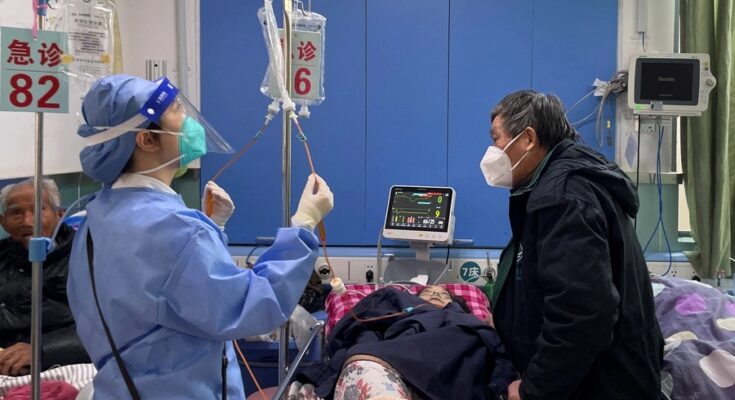Seeking loans for medical bills has become an increasingly common reality for Singaporeans caught in the precarious gap between inadequate insurance coverage and the staggering costs of healthcare. In a hawker centre along Toa Payoh, Madam Chen sips her kopi-o, carefully budgeting the $3.50 breakfast that represents a significant portion of her daily spending allowance. At 72, she navigates not only the physical limitations that come with age but also the byzantine financial landscape of medical debt that has followed her since a hospitalisation three years ago. Her experience mirrors thousands of others in a nation proud of its healthcare system yet increasingly unable to shield its citizens from financially devastating illness.
The Myth of Universal Coverage
Singapore’s healthcare system gleams with efficiency in international rankings, a testament to careful design and substantial investment. Yet beneath the impressive statistics and modern facilities lies a more complicated truth.
“Our medical financing system in Singapore operates on the principle of shared responsibility,” explains healthcare policy researcher Dr. Lim Wei Ming. “But in practice, this often translates to substantial out-of-pocket costs, particularly for those with chronic conditions, the elderly, or anyone requiring specialised care.”
The gaps emerge most visibly in several critical areas:
· MediShield Life’s coverage limits often fall significantly below actual hospitalisation costs
· MediSave withdrawal restrictions can prevent access to funds even during genuine medical need
· The “3M” system (MediSave, MediShield Life, MediFund) leaves substantial gaps despite its comprehensive appearance
· Deductibles and co-insurance requirements create immediate financial burdens even for the insured
· Pre-existing conditions face limited coverage, creating vulnerability precisely where protection is most needed
When Illness Becomes Financial Catastrophe
For Irfan, a 34-year-old delivery driver and father of two, the diagnosis came with dual shocks: cancer and financial ruin. His modest income had previously stretched just enough to cover his family’s needs, but within weeks of beginning treatment, the arithmetic of survival had fundamentally changed.
“The bills arrived with a regularity that matched my chemotherapy schedule,” he recounts, seated in the one-room flat his family now occupies after downsizing. “Each one represented another impossible choice—treatment or rent, medication or school fees.”
His experience reflects patterns observed across the healthcare system:
· Major illnesses frequently deplete MediSave accounts within months
· Families often exhaust savings before turning to loans
· Medical costs cascade beyond direct treatment to include transportation, caregiving, and lost income
· Recovery is hampered by the stress of mounting debt
· Multigenerational financial impacts spread through families as resources are pooled
The Landscape of Medical Financing
The financial architecture available to those facing medical bills presents a complex terrain of official channels, private options, and community resources, each with distinct advantages and limitations.
“The available financing options for healthcare in Singapore form a patchwork rather than a safety net,” observes financial counsellor Priya Nadarajan. “Navigating this system requires knowledge, time, and often social connections—resources that are in shortest supply precisely when illness strikes.”
For those seeking relief, the options typically include:
· Personal loans from banks, with stringent eligibility requirements
· Medical loans with more accessible criteria but higher interest rates
· Hospital instalment plans that may not cover all providers
· Community assistance funds that offer limited, means-tested support
· Family pooling that spreads financial burden but extends its reach
· Crowdfunding platforms that transform medical need into public performance
The Quiet Desperation of Medical Debt
The weight of medical debt settles differently across Singapore’s social landscape, with particularly heavy burdens falling on the elderly, gig workers, and those with chronic conditions. Its effects extend far beyond financial statements into the intimate spaces of daily life and identity.
Madam Tan, a retired clerical worker now contending with heart disease, speaks of her debt as “a constant companion, more faithful than any friend.” Having always prided herself on financial independence, she now measures her worth in different terms.
“When you owe so much for simply staying alive, you begin to question whether you deserve to,” she confides, arranging her medication into careful daily portions. “The debt becomes part of your diagnosis.”
This psychological burden manifests in:
· Delayed care-seeking that often worsens conditions and increases eventual costs
· Medication rationing that compromises treatment efficacy
· Social isolation as financial constraints limit participation
· Shame that prevents many from seeking assistance
· Intergenerational tensions when children must support parents’ healthcare
Beyond Individual Solutions
While personal financial strategies remain essential for those currently navigating medical debt, lasting solutions require systemic reconsideration of how healthcare is financed and delivered.
“The fundamental question is whether medical bills in Singapore should be treated primarily as individual responsibilities or collective obligations,” suggests healthcare economist Dr. Tay Boon Chiang. “Every developed nation answers this differently, but all successful systems acknowledge that market forces alone cannot equitably distribute something as essential as healthcare.”
Meaningful reform might include:
· Expanding MediShield Life coverage limits to more closely match actual costs
· Reducing or eliminating co-payment requirements for essential treatments
· Strengthening subsidies for preventive care to reduce downstream costs
· Creating more accessible medical loan options with controlled interest rates
· Developing more robust catastrophic illness protection
For families currently navigating medical debt, these potential future reforms offer little immediate relief. They continue piecing together solutions, making impossible choices, and searching for dignity within constraint. Their experiences reveal the profound inadequacy of treating healthcare primarily as a consumer good rather than a fundamental human need—a reality that will continue shaping countless lives until Singapore develops more compassionate approaches to loans for medical bills.




